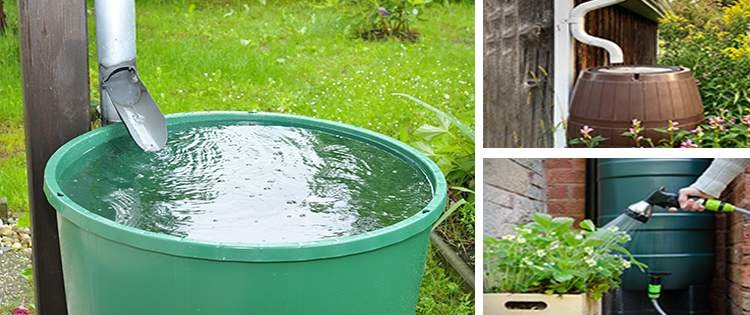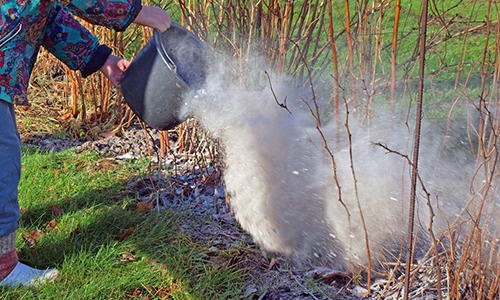Are you ready to add some delicious cucumbers to your dinner table? Then look no further! This guide will provide you with all the information and tips you need to be successful growing cucumbers in your own vegetable garden. So grab a glass of iced tea and get ready to learn the secrets of planting, growing, harvesting, and enjoying cucumbers for yourself!
A Brief History
Cucumbers have been cultivated and eaten for thousands of years. Archaeological evidence suggests that cucumbers were first grown in the Middle East around 3,000 BC. From there, they spread to India, China, Greece and eventually Rome. By the 16th century, cucumbers had made their way to England and the Americas.
Today, cucumbers are one of the most popular vegetables in the world. They are enjoyed raw in salads or pickled and used in many dishes from all around the globe. With their mild flavor and high water content, cucumbers are an excellent addition to any meal.
Cucumbers are a great source of vitamins and minerals, including Vitamin C, Vitamin K, magnesium and potassium. They are also an excellent source of fiber, which can help to regulate digestion and keep you feeling full for longer. Plus, they contain a variety of antioxidants that can help ward off disease and illness.
No matter where you live or what type of cuisine you enjoy, cucumbers are sure to be a delicious addition to your diet.
Nutritional Benefits
Cucumbers are an incredibly nutritious vegetable and can offer a range of health benefits. They are packed with essential vitamins and minerals, including Vitamin A, C, K, and Potassium.
They are also a good source of dietary fiber and low in calories, making them an ideal snack for those looking to maintain a healthy weight. Cucumbers are rich in antioxidants which help protect against oxidative damage caused by free radicals. Regular consumption of cucumbers can also reduce inflammation and may help improve heart health.
When planting cucumbers in your vegetable garden, it is important to choose the right variety for your needs. Different cucumber varieties offer different nutritional benefits, so it is important to understand the nutritional differences between each type before selecting the one that is best for you. For example, some cucumber varieties are higher in Vitamin A content than others, while some are higher in Vitamin C content than others.
Common Varieties & Their Uses
When it comes to common varieties of cucumbers, there are a few that stand out.
The most popular is the vining cucumber, which is a vigorous vine with large leaves. This variety grows quickly and produces a high yield. Bush varieties also exist and tend to require less space for growth. They also have a smaller yield, but are still popular among gardeners.
Other common varieties include the English cucumber, which has a mild flavor and thin skin, as well as the pickling cucumber, which has thicker skin and a slightly bitter taste.
Knowing the different varieties and their uses can help you choose what best fits your garden.
Vining cucumbers are great for salads, sandwiches, relishes and other dishes where you want to add some crunch. Bush cucumbers are best suited for pickling or canning because they produce more cucumbers in a smaller space.
English cucumbers are often used in salads or juicing because of their mild flavor and thin skin. Pickling cucumbers are ideal for preserving and making pickles because of their thicker skin and slightly bitter taste.
When To Sow
When to sow cucumbers depends on the climate and the variety you select.
Cucumbers are best planted in spring and summer. When deciding when to sow, it is important to consider the length of time it will take for your cucumbers to reach maturity. Some varieties take as little as 50 days, while others may take up to 120 days.
When sowing seeds directly into the ground, wait until the soil temperature has reached 18°C (64°F). This is typically around mid spring. To ensure the soil has reached the right temperature, use a soil thermometer or probe.
If you are sowing seedlings or starting seeds indoors, sow them 4-5 weeks before the last expected frost. You can sow them in small pots of seed starting or general-purpose potting mix, about 1–2cm (½–¾in) deep. Keep them at 21°C (70°F) in a heated propagator or on a warm sunny indoor windowsill.
Once you’re ready to transplant your seedlings, make sure the soil temperature is at least 18°C (64°F). Plant 1-2 feet apart, and space the rows 5-6 feet apart. You can also plant in groups of 2-3 plants with the groups several feet apart. Planting too closely together can cause overcrowding, which can lead to stunted growth and reduced yields.
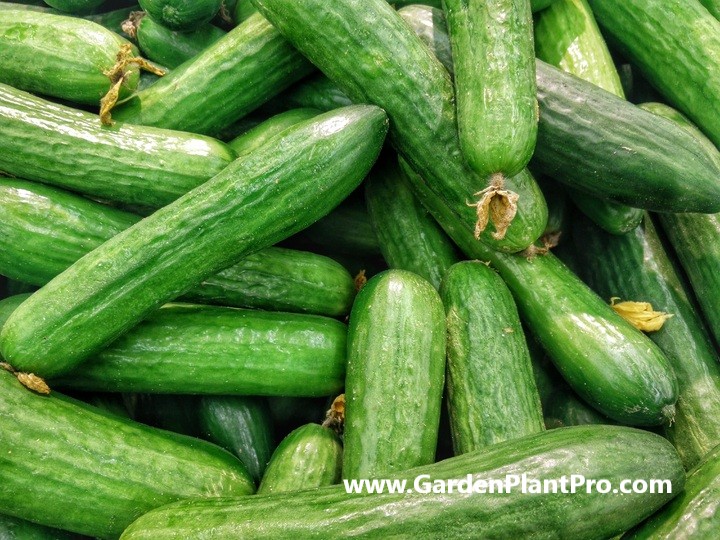
Choosing A Suitable Location In The Garden
When it comes to choosing a suitable location in the garden for your cucumber plants, there are a few factors you should consider. First, cucumbers prefer full sun locations with warm temperatures. Therefore, it is best to choose a spot that gets at least 6-8 hours of direct sunlight each day.
DIY PROJECT: Collect rainwater no matter where you live...
This DIY project is the best way to legally collect rainwater NO MATTER where you live. Get chlorine-free water, cut down on your water bills, and have enough for an emergency situation or to water your garden. Read More Here...
Secondly, if you are limited on space, you can opt for bush varieties that will tolerate closer planting spacing (18-36” apart). Lastly, cucumbers require fertile soil so make sure to prepare the bed with aged manure and/or compost prior to planting.
Preparing The Soil
Preparing the soil is essential when growing cucumbers in your vegetable garden. Prior to planting, add about 2 inches of aged manure and/or compost to the bed and work it in to a depth of 6-8 inches. Cucumbers are heavy feeders and require an organically rich, fertile, well-draining soil to thrive.
To help prepare your bed, start with a soil test to determine the pH level and nutrient levels of the soil. If needed, lime can be added to increase the pH and fertilizer can be used to boost nutrient levels. Once the desired pH has been achieved, mix in plenty of organic compost or aged manure into the soil. If planting directly into the ground, dig down 10-12 inches and remove any large stones or debris that could impede root growth. Make sure that the soil is firm but not compacted for best results.
Planting The Seeds Or Seedlings
Planting the seeds or seedlings is an important step in growing cucumbers in your vegetable garden.
If you are sowing your seeds indoors, it should be done about 3 weeks before you plan to transplant them outside. Provide bottom heat of about 70ºF (21ºC), sow 4-5 seeds into mounds of moist soil spaced 40cm apart, and water well. As the seedlings grow, thin them and leave only the two strongest. When the soil has warmed in late spring or early summer, gradually acclimatize the plants for a week or so before transplanting them outside.
When sowing cucumber seeds directly into the garden, choose a spot with full sun and well-drained soil. Sow three seeds per hole, 1 to 1.5 inches deep, and keep the mix moist but not soaking wet. Water regularly and allow for good air circulation to prevent damping off. When the seedlings have their first set of true leaves, thin them out so that the two strongest remain per container.
When transplanting seedlings into your garden beds or containers, dig holes slightly bigger than the root ball and water well after planting. If your seedlings are being planted directly outdoors, sow them twice as deep as they were growing in their punnets or pots and keep watered until they become established. Mulch around each plant to help retain moisture and reduce weed growth.
Caring For The Seedlings
Once the cucumber seeds have been planted, it’s important to care for the seedlings to ensure they grow into healthy plants. To start, make sure the soil around the seedlings is consistently moist. Water the plants about an inch per week, more if temperatures are high and there has been a lack of rain. When watering, it’s important to water at the base of the plant and not from above as this can cause fungal growth.
Once the seedlings have grown about 4-8 inches tall, you may need to provide additional support such as a trellis or stakes to keep them from sprawling out of control. You can also use twine to tie the vines onto supports.
Cucumbers appreciate an environment that is rich in nutrients and slightly acidic. Fertilizing every two weeks with a balanced fertilizer will help provide the necessary nutrients that a cucumber plant needs to thrive.
It’s also important to remove any weeds that may compete with your cucumbers for resources and water. Weeds are known to harbor pests and diseases, so it’s best to keep them away from your cucumber plants.
Watering & Fertilizing
Watering and fertilizing are important steps when growing cucumbers in your vegetable garden. Properly watered and fertilized cucumber plants will yield better tasting and more abundant fruits.
To water your cucumbers, aim to give them about 1/4 to a 1/2 gallon of water per plant each week. Be sure to keep the soil evenly moist throughout the season, as cucumbers do not like overly wet conditions. Consider adding a layer of mulch around your plants to help retain moisture in the soil.
Fertilizing is also important when it comes to growing cucumbers in your garden. Prior to planting, add about 2 inches of aged manure and/or compost to the bed and work it in to a depth of 8-10 inches. When the plants start flowering, they will benefit from an additional boost of nutrients such as blood meal or fish emulsion. Regularly feed your cucumbers during the spring and summer months for optimal growth and production.
When & How To Harvest
When it comes to harvesting cucumbers, timing is everything. Cucumbers can be harvested when they are small and immature or when they are fully grown. If harvested too early, the cucumbers will be underdeveloped in taste and texture. If harvested too late, they will be overripe and bitter.
To determine the correct time to harvest, check the size of the cucumber and the color of the skin. If the cucumber is fully grown, it should have a deep green or yellow color depending on the variety. The cucumber should also feel firm when lightly squeezed.
When harvesting cucumbers, use a sharp knife or pruning shears to cut from the vine and avoid damaging other cucumbers or the plant itself. Avoid twisting or pulling off the cucumber as this could damage the vine.
Do you have some charcoal in your house right now? We call charcoal a “miracle leftover” for anyone who wants to be a little more self-sufficient and cut costs. That’s because it can help you with so many different things around the house and garden. You can even use it to make an energy-free fridge. Read More Here...
Once harvested, store mature cucumbers in a cool and dry place away from direct sunlight. If stored properly, they should keep for up to two weeks. Immature cucumbers can be stored in a plastic bag in the vegetable drawer of your refrigerator for up to five days.
It’s important to check your plants regularly for pests and diseases, as these can affect the quality of your cucumbers. If pests or diseases are present, take steps to treat them immediately before they are able to spread further. Additionally, be sure to keep your plants well-watered and fertilized in order to maximize yield and quality of your harvest.
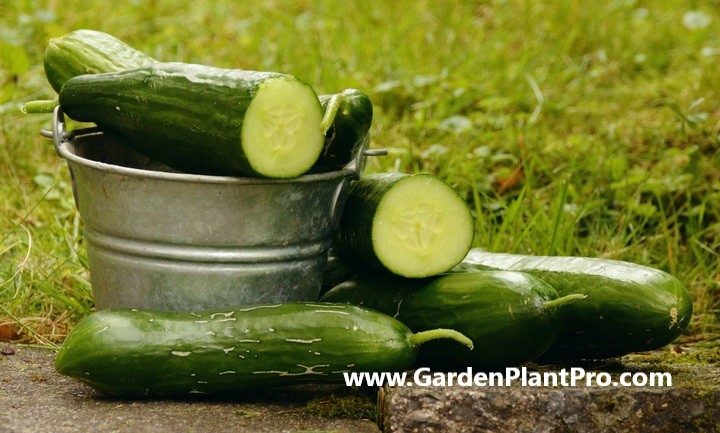
Storing
Storing is an important part of the cucumber growing process, as it allows you to enjoy cucumbers for many months after harvesting. Cucumbers can be stored in a variety of ways, including refrigeration and canning.
When harvesting cucumbers, ensure that they are fully ripe. Do not pick cucumbers that are too soft or too hard, as these will not store well. Cut off any stems or leaves before storing.
For short-term storage, cucumbers can be kept in the refrigerator for up to two weeks. Place them in a plastic bag with some ventilation holes and store them in the crisper drawer. If you plan to store them for longer than this, consider canning or freezing them.
Cucumbers can be canned in a variety of ways, including water bath canning, pressure canning and pickling. Pickled cucumbers are especially popular and make a great addition to salads and sandwiches.
To preserve your cucumbers using water bath canning, you will need to prepare a brine solution made with vinegar, water and spices before packing the cucumbers into clean jars and boiling them for 30 minutes. Pressure canning requires more specialized equipment but is faster and more efficient than water bath canning.
To freeze cucumbers, simply blanch them in boiling water for two minutes before plunging them into ice cold water to stop the cooking process. Once cooled, cut the cucumbers into slices or chunks (depending on preference) and place them on a baking sheet lined with parchment paper before transferring to a freezer-safe container or bag for storage in the freezer for up to six months. When ready to use, thaw the cucumbers overnight in the refrigerator before adding to your favorite recipes.
Storing your cucumbers correctly will ensure that they stay fresh and tasty for many months after harvesting – so you can enjoy your home-grown cucumbers all year round.
Common Diseases & How To Control Them
Cucumbers are susceptible to a few common diseases, such as powdery mildew, downy mildew, and cucumber mosaic virus. If not treated quickly and properly, these diseases can significantly reduce your harvest. Keeping a vigilant eye on your crop is one of the best ways to spot disease early and take action to prevent further spread.
Powdery Mildew
Powdery mildew is a fungal disease that appears as white powdery spots on the leaves. To prevent powdery mildew from taking hold in your garden, ensure that the soil and plants don’t stay too wet for too long and make sure there is good air circulation around the plants. Yates Nature’s Way Fungus Spray can also be used to protect against this disease.
Downy Mildew
Downy mildew is a fungal disease that causes yellow spots on the upper side of cucumber leaves and white patches on the underside of leaves. To help prevent downy mildew, use resistant varieties with the disease-resistance code FW on their seed packet. Additionally, soil solarization can help kill fungus spores in the soil.
Cucumber Mosaic Virus
Cucumber mosaic virus is an incredibly contagious virus that will cause stunted growth, yellowing, and mottling of cucumber leaves. This virus can be spread by aphids, so control aphid populations by planting companion plants like dill, marigolds, or basil near your cucumbers to attract beneficial insects like ladybugs or lacewings that will feed on aphids. Additionally, Yates Nature’s Way Fungus Spray can be used as a protective measure against viruses like cucumber mosaic virus.
Common Pests & How To Control Them
Common pests can be a major issue for cucumber growers, with caterpillars, thrips, codling moth and tomato potato oil combination insecticide being some of the most common.
To help control these pests, gardeners should take preventative measures such as cutting off leaves where tunnels are present throughout the growing season and throwing them in the garbage. In addition, regular water and feeding is needed to keep cucumbers healthy and ensure good ventilation around plants.
Organic gardeners can also use natural predators to help control pests. Ladybugs and lacewings are two beneficial insects that can help keep populations in check. Additionally, planting companion plants such as basil, dill, marigolds and nasturtiums around cucumber plants can act as a natural repellent for some pests.
In cases where insecticides are necessary, gardeners should look for products with twin modes of action against garden pests. These products offer a more effective way to control pest populations without harming beneficial insects or pollinators. When applying any form of insecticide or pesticide, it’s important to follow label instructions carefully and wear appropriate protective gear such as gloves and a face mask.
CASE STUDY: We've been living off the grid for the last 40 years...
In all that time an electric wire has never been connected to our house. We haven’t gotten or paid an electricity bill in over 40 years, but we have all the electricity we want. We grow everything we need, here, in our small backyard. We also have a small medicinal garden for tough times. Read More Here...
Beneficial Companion Plants
Beneficial companion plants can help maximize the growth of your cucumber plants, deter pests, suppress weeds, and enrich the soil. When companion planting with cucumbers, it is important to choose the right plants for the best results. Some of the best companions for cucumbers include corn, lettuce, peas, beans, radishes, onions, and sunflowers.
When companion planting with cucumbers, it is important to remember to give each plant enough space. Crowding your plants too closely together can lead to competition for nutrients and water and can stunt their growth. It is also important to remember that some plants may be beneficial for some crops and detrimental for others, so research each plant before including it in your garden.
Before planting any companion plants alongside your cucumbers, make sure to prepare the soil by loosening it with a hoe or shovel and adding organic matter such as compost or manure. This will help ensure good drainage and provide essential nutrients for your plants. After preparing the soil, you can begin planting your companion plants around or near your cucumber plants.
When choosing a companion plant for your cucumbers, you should also consider its pest-deterrent qualities. Certain companion plants have natural insect repellent properties that can help protect nearby vegetables from pests such as aphids and beetles. Good pest-deterrent companions for cucumbers include garlic, marigolds, nasturtiums, basil, chives and mint.
Finally, you should also consider what other benefits your companion plants may bring to your cucumber crop. For example, some flowers like marigolds will attract beneficial pollinators such as bees which will help to promote better fruit production in your garden. In addition to this, certain herbs like oregano can act as a natural fungicide which can help protect against disease in your cucumbers.
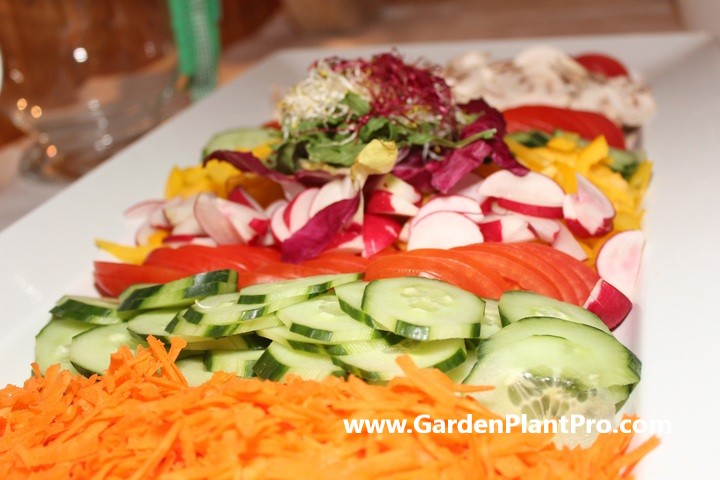
How To Make A Cucumber Salad
Making a cucumber salad is a great way to enjoy the nutritional benefits of cucumbers.
Whether you’ve grown your own cucumbers or purchased them from the store, there are a few simple steps involved in putting together a tasty and nutritious salad.
To start, you’ll need to gather together some fresh cucumbers, some herbs or spices of your choice, and an acid such as white wine vinegar or lemon juice. If desired, you can also add some onions, tomatoes, peppers, or other vegetables for added flavor and texture.
Once you have all your ingredients assembled, it’s time to get started. Begin by washing the cucumbers thoroughly in cold water and patting them dry with a paper towel. If you plan to peel the cucumbers before eating them, now is the time to do so.
Next, slice the cucumbers into thin pieces and place them in a large bowl. Add in any other vegetables that you plan to use and stir everything together. For additional flavor, add in any herbs or spices that you may be using as well as salt and pepper to taste.
Then, prepare the dressing for your salad by combining the acid of your choice with olive oil in a small bowl. Whisk these ingredients together until they are thoroughly mixed and then pour it over the cucumber mixture. Finally, toss everything together until all of the ingredients are evenly coated with dressing.
Your cucumber salad is now ready to be enjoyed! Serve it immediately or refrigerate it until you’re ready to eat it. Enjoy!


